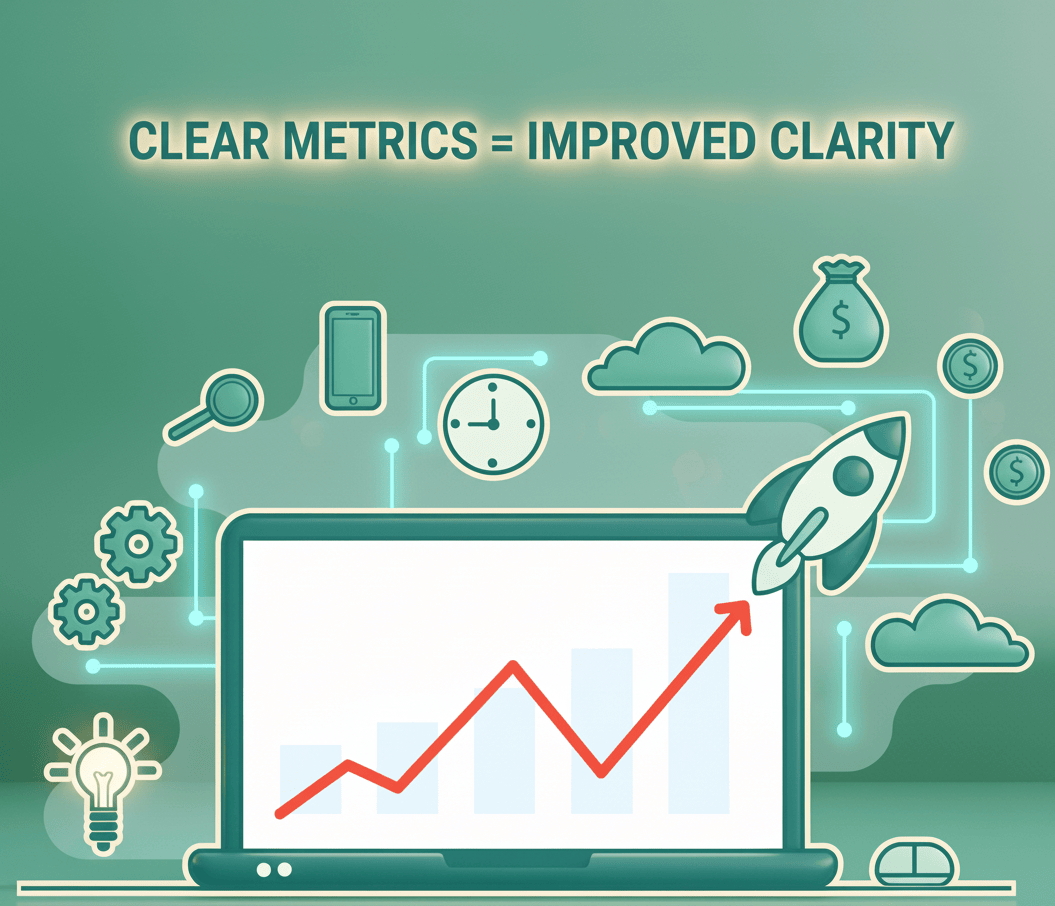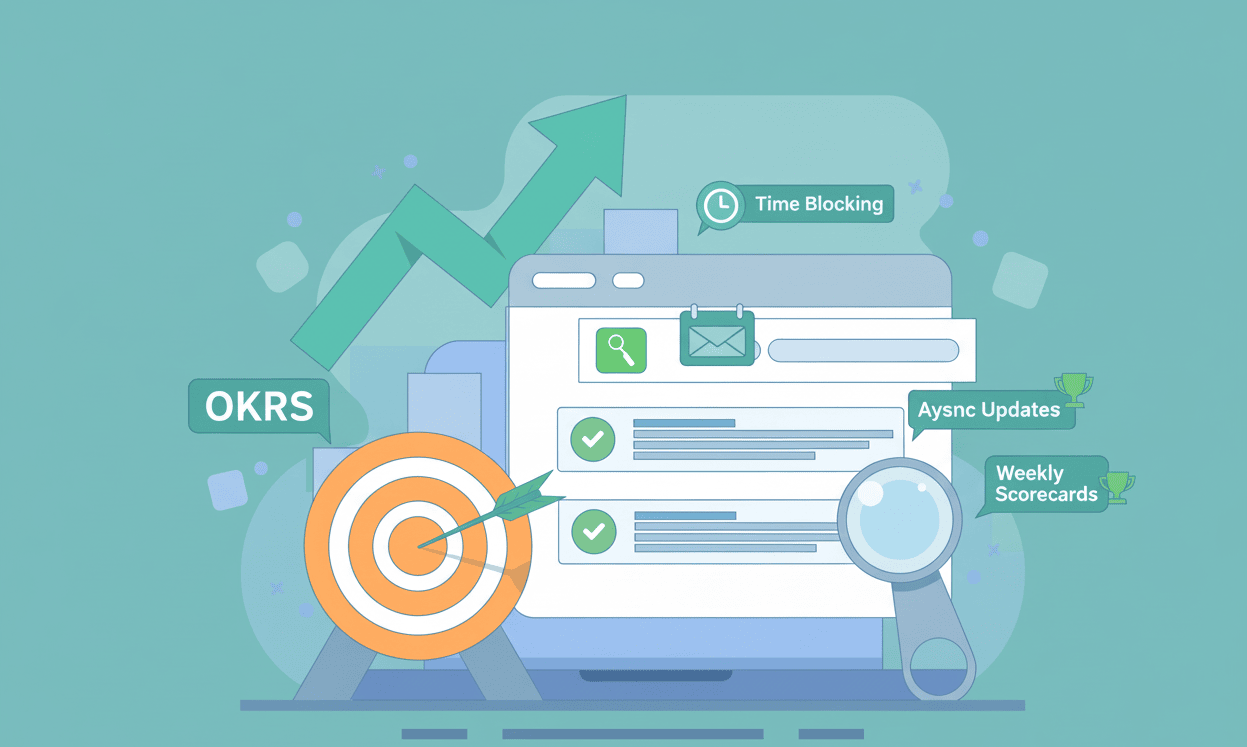Your Employees Aren’t Lazy - They’re Poorly Measured (Here’s How I Fixed It)

Key Takeaways (Before You Dive In)
-
Most employees are mainly misguided, misaligned, or poorly measured.
-
Clear KPIs, visibility, and ownership can turn passive workers into proactive leaders.
-
Productivity hacks like OKRs, async check-ins, and time-tracking tools can strengthen accountability.
My Wake-Up Call as a Co-Founder
A few months ago, I went to a seminar where a founder shared his incredible story about his team. He shared an alarming insight that stuck with me.
He realized poor measurement was giving a false flag about employee productivity.
Immediately, it hit me; it's our system all along!
As employees don’t always know how their day-to-day tasks are connected to meaningful outcomes, they drift and underdeliver.
And I realized it's time to shake things up a bit.
Measure employee productivity the right way
Why Poor Measurements Make Employees Lazy
If your company does not have proper task tracking and measurements, 3 things are permanent:
- Unclear priorities: Employees guess what matters most
- Lack of visibility: Efforts don’t turn into actionable outcomes
- No accountability: No sign of urgency, and missed schedules
So, the misguided employees then resort to laziness. And they feel that the project is not going anywhere.
Track project progress efficiently
The Shift: From Complaints to Clear Measurements
After the seminar, I came back determined to change how I led. Instead of trying to “fix” lazy employees, I focused on adjusting the way we tracked performance.
Here’s what worked for me:
1. Define What Success Looks Like (Clarity Over Chaos)
Before, my team only had tasks. But I incorporated outcome-centric metrics:
- The marketing team was measured by the qualified leads generated.
- The product team was measured by adoption rates and churn reduction.
- The support team was measured by resolution time and satisfaction scores.

Once we could follow clear metrics to reach our goals, our productivity automatically improved!
2. Make Progress Visible
We started off with a simple Google Sheets tracker. Then, as we became more productive, we switched to project automation tools for a further boost.
Employees didn’t need me to chase for updates. They could see their own numbers moving.
This is why productivity tools matter. Something as simple as a time-tracking system can create visibility of how time was lost due to an unnecessary agenda. Time tracking done right builds awareness and empowers employees to self-correct.
See how projects are moving in real time
3. Shift from Micromanaging to Ownership
I decided to trust my employees more with how they should work. No exact guidelines or pressure. I stepped off from micromanaging and let them choose the best way to work.
For example:
- Task-based: “Send 3 campaigns this week.”
- Outcome-based: “Increase trial sign-ups by 10% this month. You choose how.”
The simple outcome-based framework gave them full freedom and ownership.
We also introduced weekly async check-ins and employee monitoring software. Instead of long status meetings, each team member updates their metrics and shares blockers.
This keeps accountability alive without eating into deep work time.
Create distraction-free work time with Apploye
4. Celebrate Wins Publicly (Because Effort Must Be Seen)
Recognition hits differently when tied to measurable outcomes. So, instead of vague praise, we started calling out specific contributions:
- “Shoutout to the product team to reduce churn rate by 20%”
- “Big win from the marketing team - lead quality jumped 15%.”
These moments proved to me that measurements weren’t just numbers - they represented real impact.
Effective productivity metrics in workplaces
Productivity Hacks that Improved the System
With some productivity hacks, our team became more proactive.

Here’s what I implemented:
- OKRs (Objectives & Key Results): Simple, high-level goals with measurable outcomes.
- Time blocking: Encouraged people to dedicate chunks of the day to deep work.
- Async updates: Short written check-ins kept alignment strong without draining energy in meetings.
- Weekly scorecards: Each team tracked 2–3 core metrics and reported progress every Friday.
None of these hacks was radical. But together, they built rhythm and accountability into our work culture.
Why Measurement Became the Game-Changer for Me
What I feared with the new measurement system is the aversion and discomfort of the employees. But to my surprise, most employees accepted the change wholeheartedly.
For example:
A support team member noticed his resolution times dropping by 15% in 2 weeks. He became more proactive in being faster at issue resolution!
Instead of micromanagement, measurement gave them proof of progress. And it was all they needed to change how they work.
Get rid of micromanagement & build trust
Ripple Effect Transformed My Whole Team
Within weeks of changing the system, I noticed a transformation:
- Meetings were sharper because everyone came with their metrics.
- Team members proposed experiments to improve results.
- Instead of waiting for instructions, employees started driving initiatives themselves.
The same people I once considered “lazy” became some of the most proactive. It was the system that made them look like they’re reactive!
Transform your team with engagement
My Realization after the Hurdle
When founders complain about “lazy employees,” it usually says more about leadership than the team.
Once I fixed the system, employees rose to the occasion. At the end of the day, employees also want to grow and win with you!
If you’re looking to bring more clarity, accountability, and visibility to your team, check out Apploye’s productivity blog!
